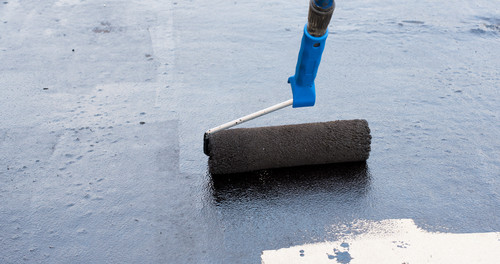What Are Your Options for Commercial Waterproofing?

Commercial buildings face more waterproofing issues than a home, and more so with multi-story building as opposed to a single-business structure. Research shows that damage due to water leaks account for building defects by up to 80%.
Since commercial waterproofing will only cost 1% of a building’s overall expenses, it should be a top priority. Failure to do so would mean that the building is not up to scratch for tenants and will result in loss of rent and revenue.
It is important to use the correct commercial waterproofing solution.
What are your options?
Cementitious Waterproofing
This waterproofing solution is popular in construction because it is the easiest method. Materials are readily available and doesn’t require special skills to mix and apply.
It uses a rigid or semi-flexible type of waterproofing. Since it is used in internal areas and is not exposed to weathering and sunlight, it does not require protection against the contract and expansion process. Thus, easy to use.
The cementitious waterproofing method is often used in wet areas such as toilets as well as in water treatment plants, sewage treatment plants, railway and subway systems, parking structure and lots, and river locks or channels.
Bituminous Coating Waterproofing
Also called asphalt coating, this waterproofing method offers waterproofing and flexible protective coating at a level that is influenced by the polymer grade and fiber reinforcement. This means its flexibility and water protection will depend on its formulation and polymerization grade.
The coating is made of bitumen-based materials that become brittle and fragile when exposed to sunlight for longer periods. This is why it has to be mixed with polyurethane, acrylic-based polymers, and other more flexible materials. How flexible the bituminous coating is will depend on the added solid content of the polymer.
Bituminous coating is often used in concrete foundations and in areas beneath screed wet.
Dex-O-Tex
Unlike the first two commercial waterproofing methods, Dex-O-Tex is used to waterproof exterior surfaces, such as garages, outdoor balconies, and walkways. It not only protects a building from water damage but also from constant wear and tear from the weather. It practically preserves the surface where it is used.
Dex-O-Tex has certain advantages over existing waterproofing solutions.
- Increases durability of any surface
- Delays the need for repair or replacement
- Available in different decorative finishes
- Available in different selection of colors
- Can be customized according to client’s preference
- Low maintenance only requires a mild cleaning solution
- Comes with a 10-year warranty, with 5-year interval maintenance, including the application of one layer of top coating.
Given these advantages, you are sure to save a huge amount from construction and maintenance costs with Dex-O-Tex.
Experts must install it, however. Some may consider this a downside but given the guarantee that a professionally installed weather wear system lasts longer, it is an upside. Professional installation also means mistakes are avoided (or insured against) and clients don’t have to suffer through any problems.
Conclusion
There are plenty of commercial waterproofing solutions available. But choose one that saves you money in the long run while protecting your building for a long time.
WICR Waterproofing & Decking is Southern California’s premiere waterproofing and decking specialist covering Los Angeles, Orange County, San Diego, Riverside, and San Bernardino counties. We are trained by all the major manufacturers of waterproofing systems, so that we can install or repair any waterproofing project. Please visit us at www.WICRWaterproofing.com
